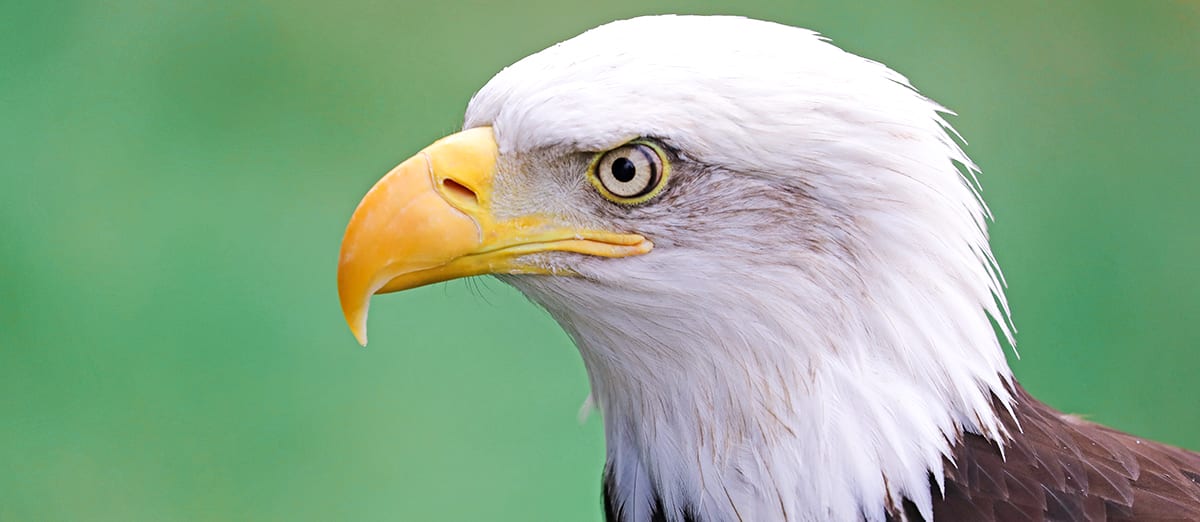The first discussion we have in the English 12 Poetry Unit is about truth.
Too many people consider poetry to be something that exists on a continuum between fluff and falsehood. This drives us Humanities types batty. Many hold to the mistaken idea that a thing is true if it is factual. Poetry isn’t usually factual; therefore, we think it isn’t true.
This is a narrow notion of truth, and I challenge it in my class from the outset.
Whoa-ness of Eagles
Perrine’s Literature, a text book we used to use, talks about the difference between encyclopedic facts of eagles with Alfred Lord Tennyson’s poem “The Eagle” to make the point that poetry offers a different experience that do facts. A lot more can be made of this comparison.
I have my students collect a bunch of facts about bald eagles and we fill a whiteboard with them. Here’s a sample of what they find:
- The female bald eagle is 35 to 37 inches, slightly larger than the male.
- Wingspan ranges from 72 to 90 inches.
- Bald eagles can fly to an altitude of 10,000 feet. During level flight, they can achieve speeds of about 48 to 55 km per hour.
- The beak, talons, and feathers are made of keratin.
- Bald eagles have 7,000 feathers.
- Wild bald eagles may live as long as thirty years.
- Lifting power is about 4 pounds.
- All eagles are renowned for their excellent eyesight.
- Once paired, bald eagles remain together until one dies.
- Bald eagles lay from one to three eggs at a time.
These items gleaned from online encyclopedias are factual and they are true.
Then we look at Tennyson’s poem.
THE EAGLE
He clasps the crag with crooked hands;
Close to the sun in lonely lands,
Ringed with the azure world, he stands.
The wrinkled sea beneath him crawls;
He watches from his mountain walls,
And like a thunderbolt he falls.
In this simple, six-line poem, Tennyson attempts to communicate that eagles are, in a word, awesome. But awesome doesn’t really capture it, nor does formidable or magnificent.
When I was 8 or so, I went with my class to a bird sanctuary. After viewing crows, seagulls and owls recovering from various injuries, I came face-to-face with a bald eagle—close up! It looked at me, and then looked away. I was awed by his size, his talons, his beak, his eyes—I remember my reaction; I whispered, “Whoa!”
Tennyson attempts to communicate the “whoa-ness” of eagles.
Beyond the facts
We fill another whiteboard with notes about of Tennyson’s poem, unpacking the figurative language, sound devices, imagery and allusions. In the words and between the lines of this poem, readers experience the power and strength of this majestic bird as it is metaphorically compared to a wise and solitary king whose power is absolute.
I ask my students which is more true—the list of facts on the first whiteboard or the poem written by Tennyson. Many, perhaps most, confidently say the list of facts is “truer.” Some are uncertain. Eventually, someone calls out, “both are true.”
There we go!
“The Eagle” communicates a truth about eagles that go beyond the encyclopedic facts. A truth that is best communicated with poetry. Our culture has been resistant of this broader understanding of truth for a long time, to its detriment.
How much of the Bible becomes inaccessible when we reduce truth to fact?
Things get even more interesting when I suggest, in line with C. S. Lewis in Abolition of Man, that “whoa-ness” is a quality inherent to the eagle, and not just a description of my subjective reaction to it. I’ll spare you the details.
The next poem we look at is A. E. Houseman’s “Is My Team Ploughing,” a conversation between a dead man and his still-living friend. I ask my class, is this a true poem? This time less than half say “No.” Some are still uncertain.
But many, reflecting on the central purpose of the poem, declare it to be true.






WHAT DO YOU THINK?
So good Trent! Keep this spirit of truth alive in our school. Love it.